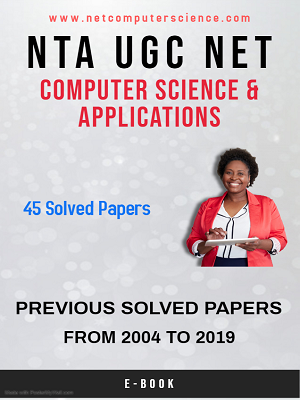51. Blind
image deconvolution is ................
(A)
Combination of blur identification and image restoration
(B)
Combination of segmentation and classification
(C)
Combination of blur and non-blur image
(D) None of
the above
Answer:
A
52. A
basic feasible solution of a linear programming problem is said to be ...............
if at least one of the basic variable is zero.
(A)
degenerate (B) non-degenerate
(C)
infeasible (D) unbounded
Answer:
A
53. Consider
the following conditions :
(a) The
solution must be feasible, i.e. it must satisfy all the supply and demand constraints.
(b) The
number of positive allocations must be equal to m+n-1, where m is the number
of rows and
n is the number of columns.
(c) All the
positive allocations must be in independent positions.
The initial
solution of a transportation problem is said to be non-degenerate basic feasible
solution if it satisfies :
Codes :
(A) (a) and
(b) only (B) (a) and (c) only
(C) (b) and
(c) only (D) (a), (b) and (c)
Answer:
D
54. Consider
the following transportation problem :
The
transportation cost in the initial basic feasible solution of the above
transportation problem using Vogel’s Approximation method is :
(A) 1450 (B) 1465
(C) 1480 (D) 1520
Answer:
B
55. The
character set used in Windows 2000 operating system is ...............
(A) 8 bit
ASCII (B) Extended ASCII
(C) 16 bit
UNICODE (D) 12 bit UNICODE
Answer:
C
56. In
Unix, the command to enable execution permission for file “mylife” by all is
................
(A) Chmod
ugo+X myfile (B) Chmod a+X myfile
(C) Chmod +X
myfile (D) All of the above
Answer:
D
57. What
will be the output of the following Unix command ?
$rm chap0\[1
- 3\]
(A) Remove
file chap0[1 - 3]
(B) Remove
file chap01, chap02, chap03
(C) Remove
file chap\[1 - 3\]
(D) None of the
above
Answer:
A
58. Which
of the following statements regarding the features of the object-oriented
approach to databases are true ?
(a) The
ability to develop more realistic models of the real world.
(b) The
ability to represent the world in a non-geometric way.
(c) The
ability to develop databases using natural language approaches.
(d) The need
to split objects into their component parts.
(e) The
ability to develop database models based on location rather than state and
behaviour.
Codes :
(A) (a), (b)
and (c) (B) (b), (c) and (d)
(C) (a), (d)
and (e) (D) (c), (d) and (e)
Answer:
A
59. Consider
the following database table :
Create table
test(
one integer,
two integer,
primary
key(one),
unique(two),
check(one≥1
and ≤10),
check(two≥1
and ≤5) );
How many data records/tuples atmost can this
table contain ?
(A) 5 (B)
10
(C) 15 (D)
50
Answer: A
60. Suppose
ORACLE relation R(A, B) currently has tuples {(1, 2), (1, 3), (3, 4)} and
relation S(B, C) currently has {(2, 5), (4, 6), (7, 8)}. Consider the following
two SQL queries SQ1 and SQ2 :
SQ1 : Select
*
From
R Full Join S
On
R.B=S.B;
SQ2 : Select *
From R Inner Join S
On R.B=S.B;
The numbers of tuples in the result of the
SQL query SQ1 and the SQL query SQ2 are given by :
(A) 2 and 6 respectively (B) 6 and 2 respectively
(C) 2 and 4 respectively (D) 4 and 2 respectively
Answer: D









0 Comments